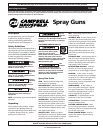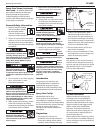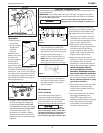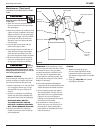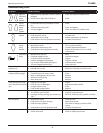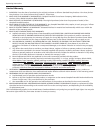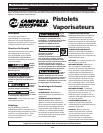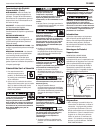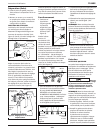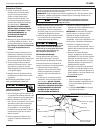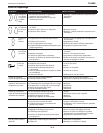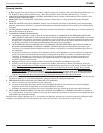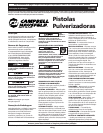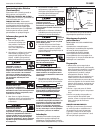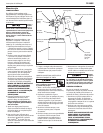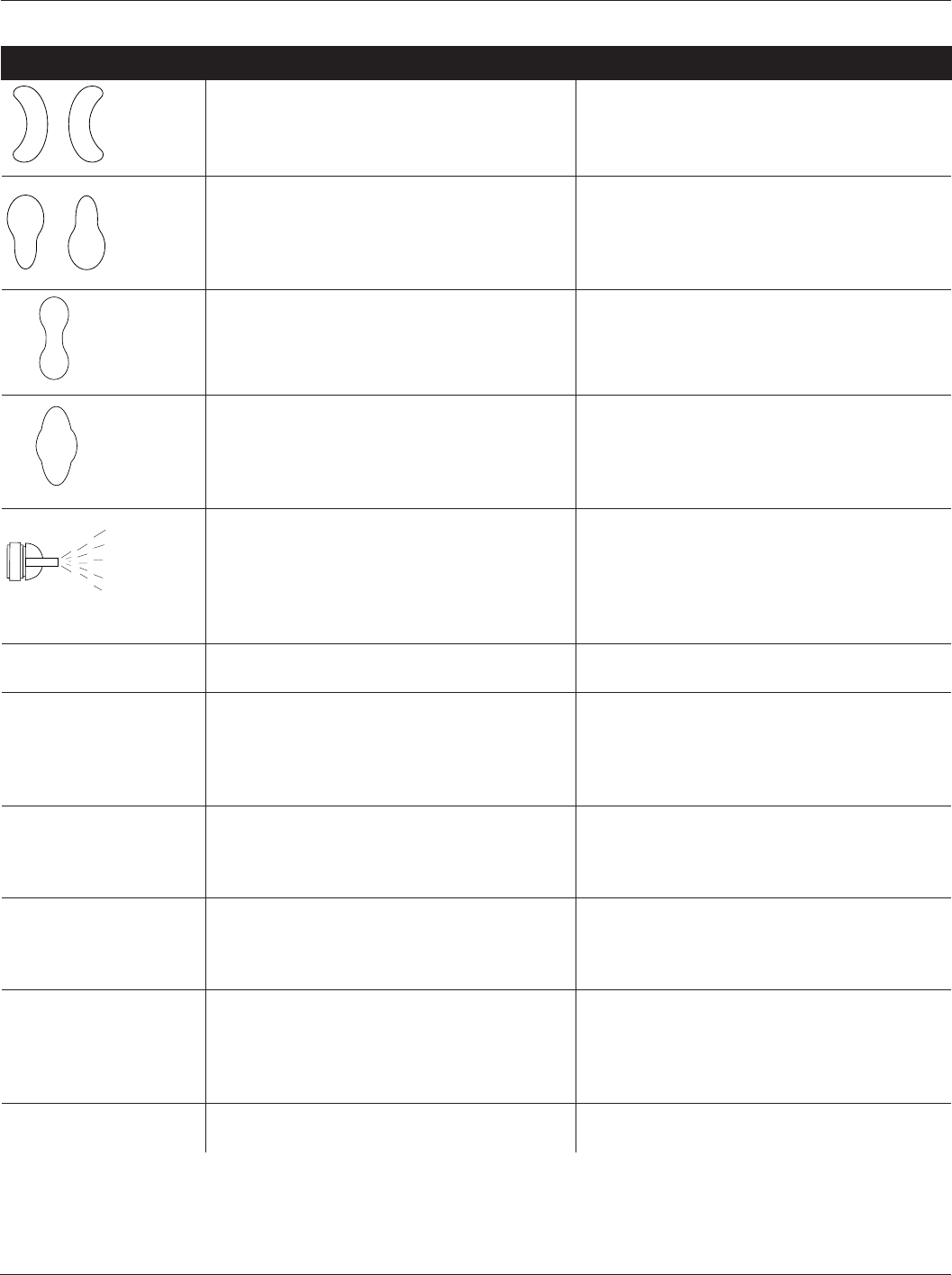
Operating Instructions TL2402
5
www.chpower.com
Symptom Possible Cause(s) Corrective Action
Right or
left heavy
spray
pattern
1. Holes in left or right side of the air cap are
plugged
2. Dirt on left or right side of fluid tip
1. Clean. Use only non-metallic paint
2. Clean
Top or
bottom
heavy
spray
pattern
1. Dried material at top or bottom of fluid
tip
2. Loose air cap or dirty seat
3. Air cap plugged
1. Clean
2. Clean and tighten
3. Clean. Use only non-metallic paint
Split spray
pattern
1. Fan pattern open too far
2. Fluid turned in too far
3. Atomization air too high
4. Fluid pressure too low (pressure feed only)
1. Partially close the pattern adjustment
2. Increase fluid
3. Reduce atomization air pressure
4. Increase fluid pressure
Center
heavy
spray
pattern
1. Fan adjustment partially closed
2. Material too thick
3. Atomization pressure too low
4. Fluid pressure too high (pressure feed)
1. Open fan pattern adjustment
2. Thin to proper viscosity
3. Increase atomization pressure
4. Reduce fluid pressure or turn in fluid
control knob
Sputtering
spray
1. Material level too low
2. Container tipped too far
3. Loose fluid inlet connection
4. Loose or damaged fluid tip/seat
5. Dry or loose fluid needle packing nut
6. Air vent clogged (siphon only)
1. Refill
2. Hold more upright
3. Tighten
4. Adjust or replace
5. Lubricate and or tighten
6. Clear vent hole
Fluid leaking from
packing nut
1. Packing nut loose
2. Packing worn or dry
1. Tighten, but do not restrict needle
2. Replace or lubricate (non-silicone oil)
Air leaking from air cap
without pulling trigger
1. Sticking air valve stem
2. Contaminate on air valve or seat
3. Worn or damaged air valve or seat
4. Broken air valve spring
5. Bent valve stem
1. Lubricate
2. Clean
3. Replace
4. Replace
5. Replace
Fluid leaking from fluid
tip of pressure feed spray
gun
1. Packing nut too tight
2. Fluid tip worn or damaged
3. Foreign matter on tip
4. Fluid needle spring broken
1. Adjust
2. Replace tip and/or needle
3. Clean
4. Replace
Excessive overspray 1. Too high atomization pressure
2. Too far from work surface
3. Improper stroking (arcing, gun motion too
fast.)
1. Reduce pressure
2. Adjust to proper distance
3. Move at moderate pace, parallel to surface
Will not spray 1. No pressure at gun
2. Fluid control not open enough
3. Fluid too heavy (siphon)
4. Fluid pressure too low (pressure feed)
1. Check air lines
2. Open fluid control
3. Thin fluid or change to pressure feed
system
4. Increase fluid pressure
No pressure in tank 1. Regulator damaged or defective
2. Check valve stuck
1. Replace regulator
2. Clean or replace check valve
Troubleshooting Chart



